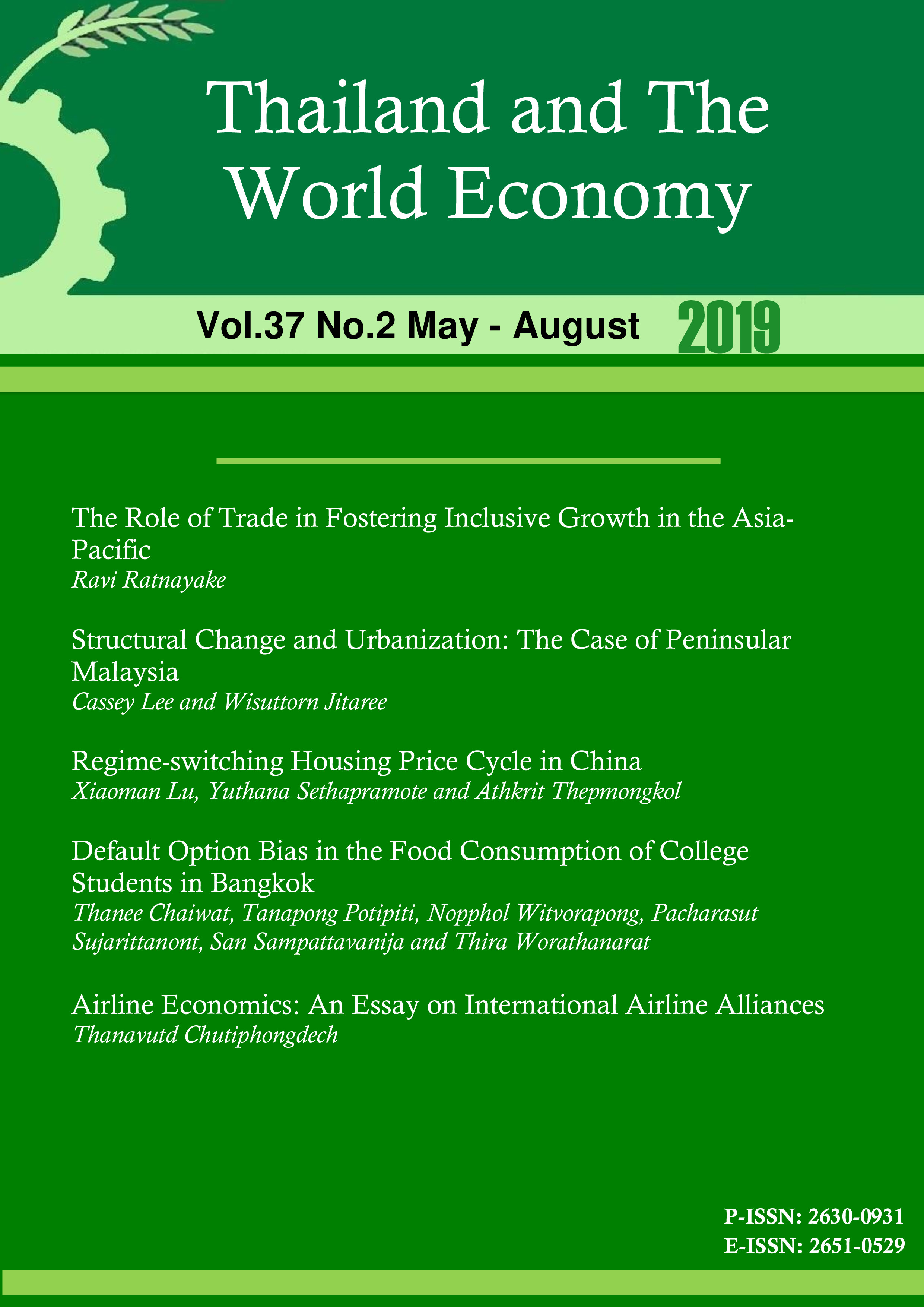Default Option Bias in the Food Consumption of College Students in Bangkok
Keywords:
Behavioral Economics, Default Option Bias, Food Consumption, ChoicesAbstract
The objective of this research is to study behavioral bias through setting a default option in food consumption among college students in Bangkok and its suburbs via a population-based survey experiment. The survey encompasses 1,222 observations across 15 educational institutes. Based on the literature, this research categorizes three ways of setting a default option via recommendations, cognitive effort and context. Comparing the treatment groups to the baseline, the findings reveal that setting a default option via the three channels affects consumption choices, which can be implemented as a policy. This ranges from including healthy food items in recommended menus, making a healthy option a default that requires no addition cognition, and creating contextual components that highlight options and induce the consumption of healthy food.
References
Acharya, R., Patterson, P., Hill, E., Schmitz, T., & Bohm, E. (2006). An evaluation of the "treat yourself well" restaurant nutrition campaign. Health Education & Behavior. The Official Publication of the Society for Public Health Education, 33(3), 309-324.
Anzman-Frasca, S., Dawes, F., Sliwa, S., Dolan, P., Nelson, M., Washburn, K., & Economos, C. (2014). Healthier side dishes at restaurants: An analysis of children's perspectives, menu content, and energy impacts. The International Journal of Behavioral Nutrition and Physical Activity, 11(81), 1-12.
Downs, J., Loewenstein, G., & Wisdom, J. (2009). Strategies for promoting healthier food choices. The American Economic Review, 99(2), 159-164.
David, R., & Brian, W. (2009). Smarter lunchrooms: Using behavioral economics to improve meal selection. Choices, 24(3), 1-7.
Hanks, A., Just, D., Smith, L., & Wansink, B. (2012). Healthy convenience: Nudging students toward healthier choices in the lunchroom. Journal of Public Health, 34(3), 370-376.
Hanks, A., Just, D., Smith, L., & Wansink, B. (2012). Trigger foods: The influence of "irrelevant" alternatives in school lunchrooms. Agricultural and Resource Economics Review, 41(1), 114-123.
Johnson, E., & Goldstein, D. (2003). Medicine do defaults save lives?. Science, 302(5649), 1338-1339.
Kahneman, D. (2003). Maps of bounded rationality: Psychology for behavioral economics. The American Economic Review, 93(5), 1449-1475
Kosulwat, V. (2002). The nutrition and health transition in Thailand. Public Health Nutrition, 5(1), 183-189.
Meyers, A. W., Stunkard, A. J., & Coll, M. (1980). Food accessibility and food choices: A test of Schachter's externality hypothesis. Archives of General Psychology, 37(10), 1133-1135.
Roberto, C., & Kawachi, I. (2014). Use of psychology and behavioral economics to promote healthy eating. American Journal of Preventive Medicine, 47(6), 832-837.
Schouteten, J., (2016). Information and context effects on consumers' food experience. Retrieved from: https://www.researchgate.net/publication/309320776 _Information_and_context_effects_on_consumers'_food_experience.
Schwartz, M. B. (2007). The influence of a verbal promt on school lunch fruit consumption: A pilot study. International Journal of Behavioral Nutrition and Physical Activity, 4(6), 1-5.
Smith, V. (1991). Papers in experimental economics. Cambridge England: Cambridge University Press.
Wansink, B., & Kim J. (2005). Bad popcornin big buckets: Portion size can influence intake as much as taste. Journal of Nutrition Education and Behavior, 37(5), 242-245.
Wootan, M. G. (2012). Children's meals in restaurants: Families need more help to make healthy choices. Childhood Obesity, 8(1), 31-33.







